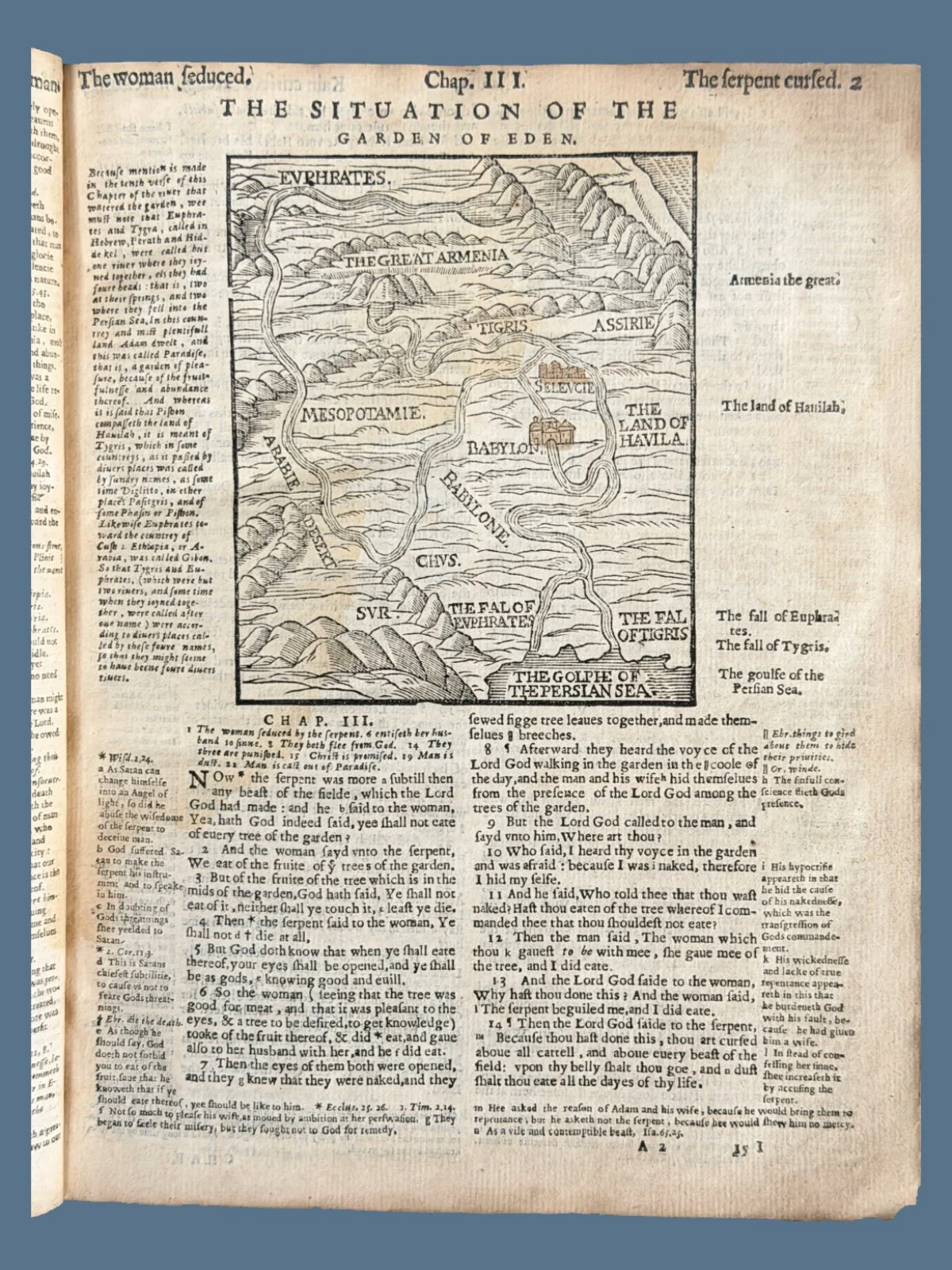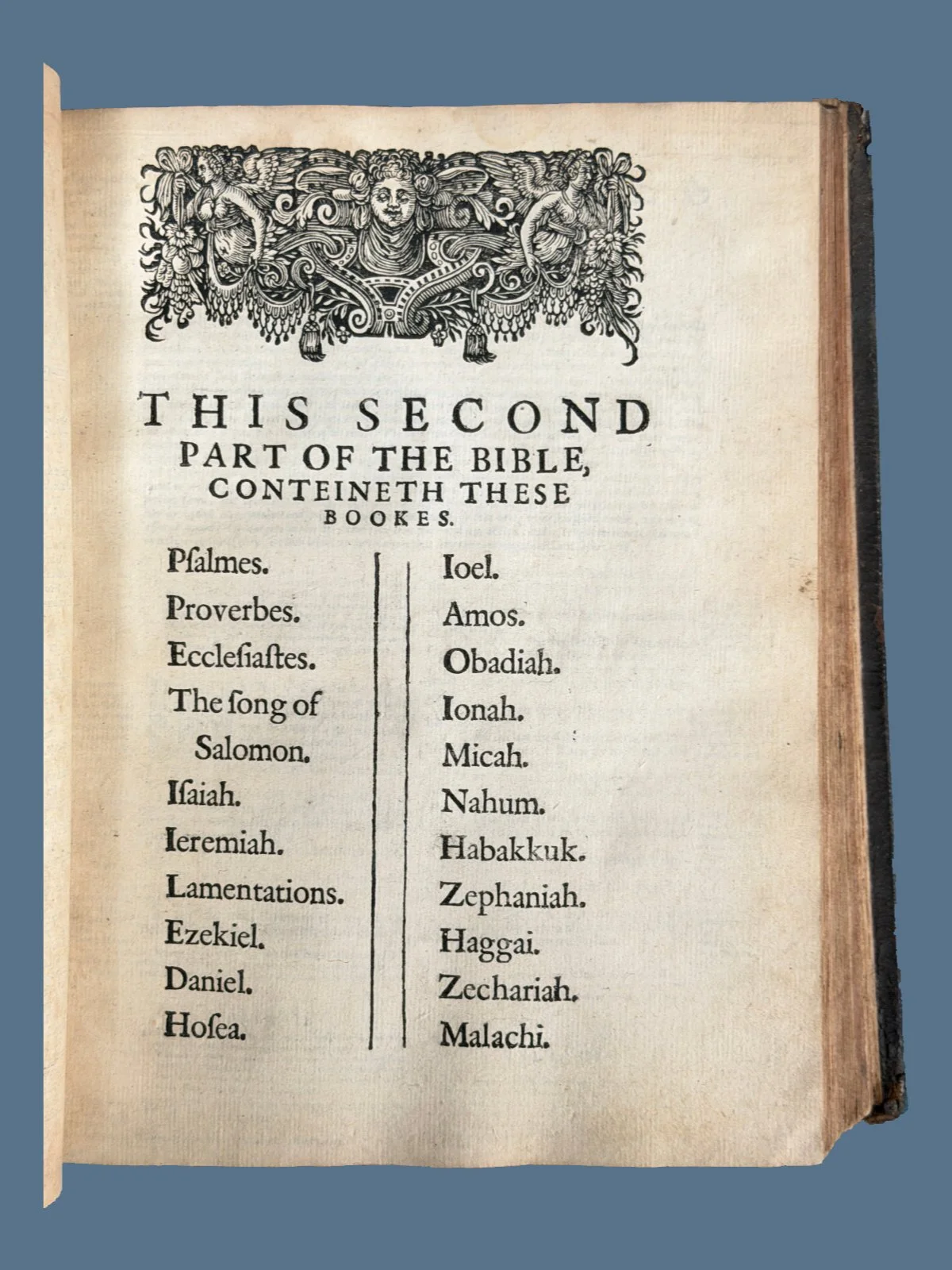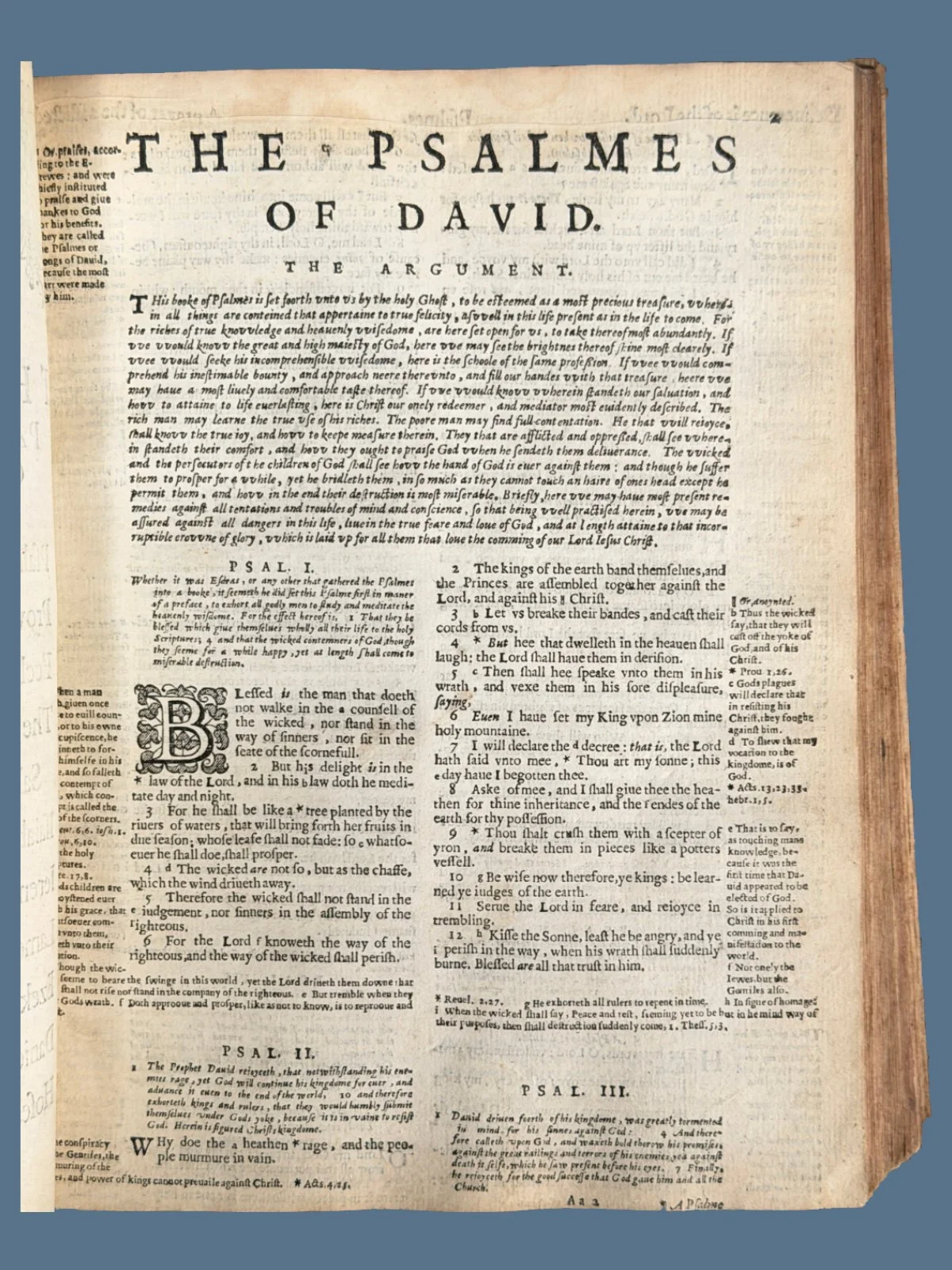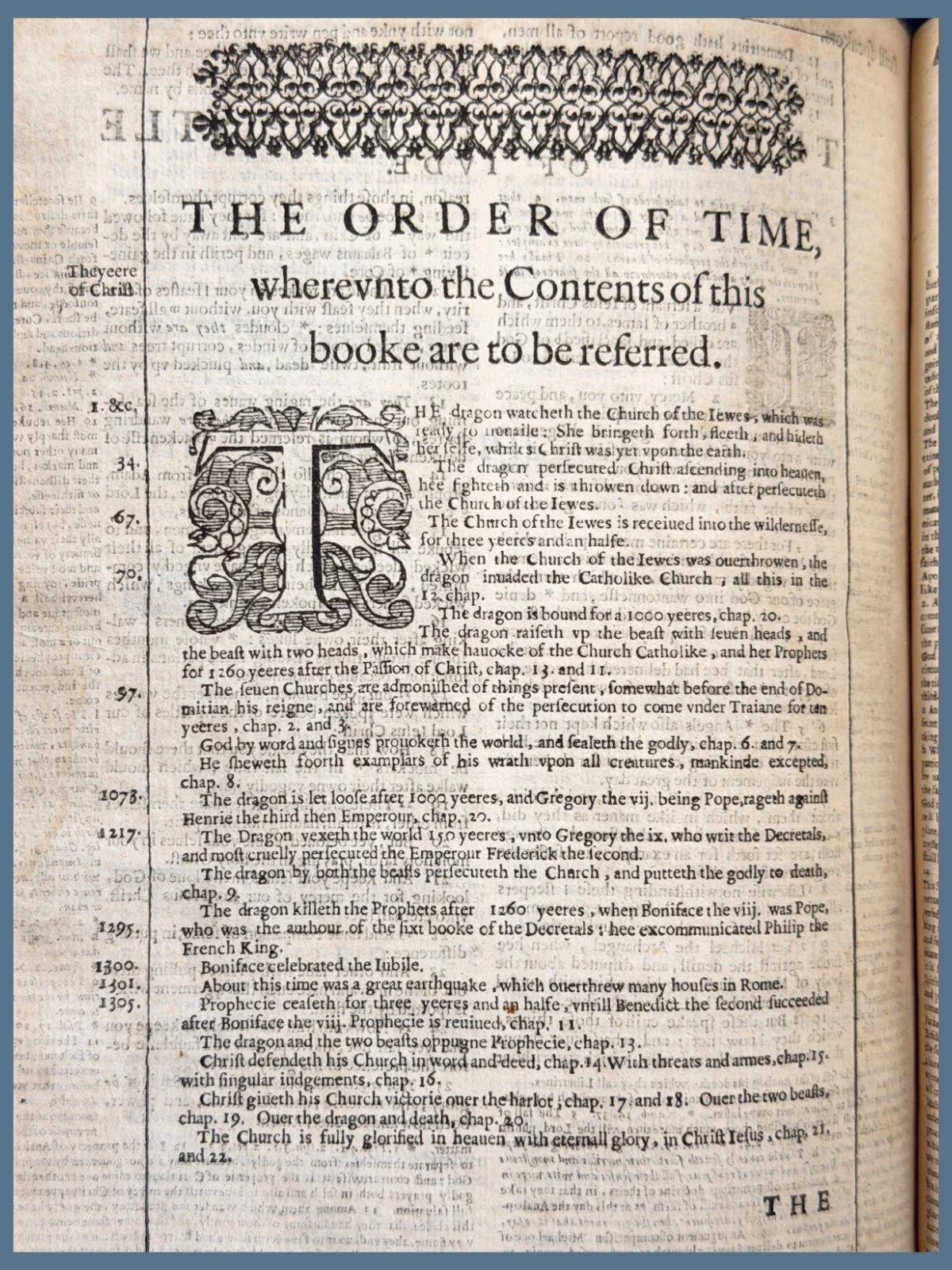The Bible, That is, the Holy Scriptures Conteined in the Old and New Testament. Translated according to the Ebrew and Greeke, and conferred with the best translation in divers Languages. With most profitable Annotations…
Summary
The famous 1599 quarto Geneva Bible. Complete Bible text in Roman font with the full set of Geneva illustrations and maps. Beautifully bound in two-toned paneled calf.
Description
The printed title page (1599) with woodcut of crossing of the Red Sea, hand colored in green and red. Text in two column Roman font containing Tomson’s New Testament and Junius’ Revelation. Complete set of Geneva illustrations and maps. Title to the Second Part (n.d.) with decorated headpiece. Woodcut of Solomon’s Throne in 1 Kings 10 accented in red. Issued without Apocrypha. New Testament title page (1599) with woodcut border comprising twenty-four small compartments showing the tents of the twelve tribes as well as the figures of the twelve apostles. Title is enclosed within a heart-shaped frame. Concludes with a dated colophon (1599) at the end of the two Tables. The Booke of Psalmes by Sternhold and Hopkins with printed title page (n.d.). Woodcut first chapter initials and decorated head- and tailpieces throughout. This copy was likely printed in the 1630s in Amsterdam.
Collation
[par]^2, A^8, A-Z^8, &^6 (first part: Gen-Job), Aa-Qq^8 (second part: Psalms- Malachi), Aaa-Qqq^8, Rrr^4 (New Testament). Bible text complete.
Binding
Late seventeenth century Cambridge paneled calf, sometime expertly rebacked. Panels with contrasting brown panels, blind rolls, and corner fleurons. Spine with five blind-lined raised bands and a red morocco label with the words “Holy Bible” in gilt. Plain endpapers. All edges red.
Condition
Text is overall quite clean with wide margins; staining to gutter and inner column in the Pentateuch and at the end of the Metrical Psalter; minimal spotting or browning, a very nice copy of a very desirable book.
Note
Most Geneva Bibles dated 1599 were printed in Amsterdam following King James's 1616 ban on printing the Geneva Bible in England, intended to promote his sponsored translation. Despite the ban, the Geneva Bible remained popular and was printed abroad, then imported into England. In the 1630s, Archbishop Laud prohibited its importation, prompting printers to add falsely dated title pages to circumvent restrictions. The Geneva Bible's popularity endured for over three generations, as evidenced by the vast number of pirated copies available today, highlighting that the King James Bible did not immediately become the dominant text.
References
Herbert 248; STC 2174; Lea Wilson’s No. 6.















